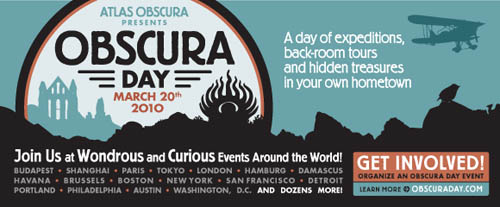
BLDGBLOG and Atlas Obscura have teamed up to lead an outing into the deserts of southern California on Saturday, March 20: an afternoon-long photographic expedition through the dusty grids of unpaved streets on the northeastern fringe of California City.
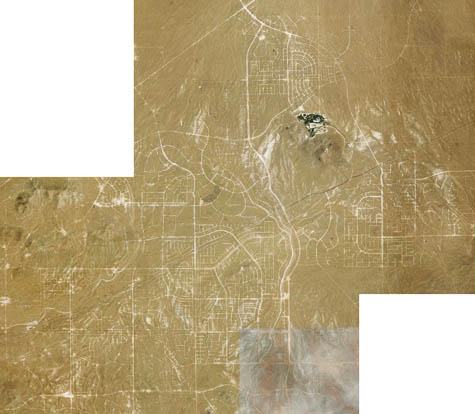
To quote from an earlier post here on BLDGBLOG:
In the desert 100 miles northeast of Los Angeles is a suburb abandoned in advance of itself—the unfinished extension of a place called California City. Visible from above now are a series of badly paved streets carved into the dust and gravel, like some peculiarly American response to the Nazca Lines (or even the labyrinth at Chartres cathedral). Bill & Ted meet Cerne Abbas Man.
The uninhabited street plan has become an abstract geoglyph—unintentional land art visible from airplanes—not a thriving community at all.
On Google Street View, distant structures like McMansions can be made out here and there amidst the ghost-grid, mirages of suburbia in the middle of nowhere. Meaningless STOP signs stand guard over dead intersections.
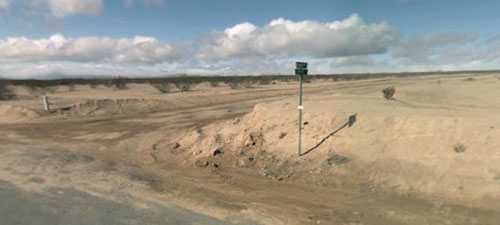
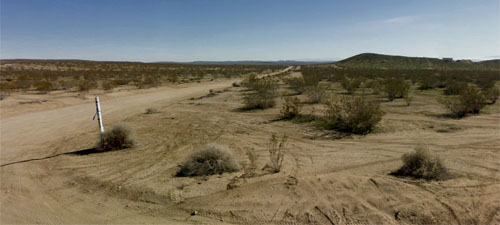
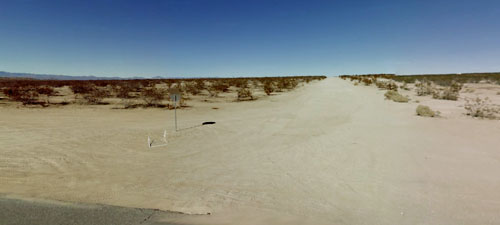
And it’s a weird geography: two of the most prominent nearby landmarks include a prison and an automobile test-driving facility run by Honda. There is also a visually spectacular boron mine to the southeast—it’s the largest open-pit mine in California, according to the Center for Land Use Interpretation—and an Air Force base.
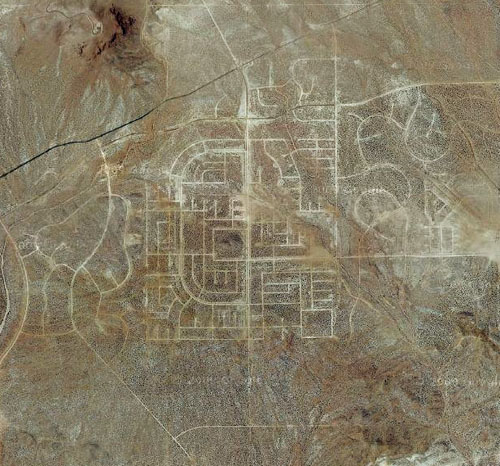
To make things more surreal, in an attempt to boost its economic fortunes, California City hired actor Erik Estrada, of CHiPs fame, to act as the town’s media spokesperson.
The history of the town itself is of a failed Californian utopia—in fact, incredibly, if completed, it was intended to rival Los Angeles. From the city’s Wikipedia entry:
California City had its origins in 1958 when real estate developer and sociology professor Nat Mendelsohn purchased 80,000 acres (320 km2) of Mojave Desert land with the aim of master-planning California’s next great city. He designed his model city, which he hoped would one day rival Los Angeles in size, around a Central Park with a 26-acre (11 ha) artificial lake. Growth did not happen anywhere close to what he expected. To this day a vast grid of crumbling paved roads, scarring vast stretches of the Mojave desert, intended to lay out residential blocks, extends well beyond the developed area of the city. A single look at satellite photos shows the extent of the scarred desert and how it stakes its claim to being California’s 3rd largest geographic city, 34th largest in the US. California City was incorporated in 1965.
California City is now the site of a proposed mega-farm for solar energy harvesting, as well as for a bizarre plan to build the so-called Cannabis City of the Future.
Sign up to join us over at the Obscura Day site.
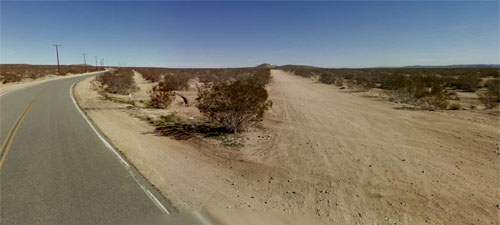
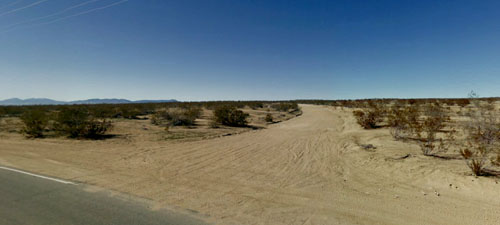

Note, however, that this is not a guided tour; it is simply an organized simultaneity of people all going out to investigate these streets en masse. Armed with cameras, microphones, sketchbooks, GPS devices, quickly scrawled notes for future blog posts, and more, we’ll be exploring the site at our own pace, perhaps even miles apart at various times. This is not a guided tour with an expert on the area.
As such, all questions of transportation (including tires suitable for travel over unsealed dirt roads); adequate food, fuel, and water; personal safety (including protection from sprained ankles and snakes); and navigation are up to individual participants.
We will meet at 1pm on Saturday, March 20, 2010, in the parking lot of Rite Aid in California City: 9482 California City Boulevard, California City, CA 93505. There will be a very brief group introduction there—and you can run inside to buy Cokes or whatever—before we set off to document the uninhabited streets outside town. Let’s photograph, film, blog, Lomo, Twitter, and audio-record the crap out of this place! I’ve started a Flickr group, which will be opened up soon. If you arrive late, simply head out Randsburg Mojave Road, onto 20 Mule Team Parkway, and look for the cars; our eventual cluster of destinations is approximately 15 minutes’ drive northeast of town.
And, in the unlikely event of torrential rains, I will post travel updates here on BLDGBLOG.
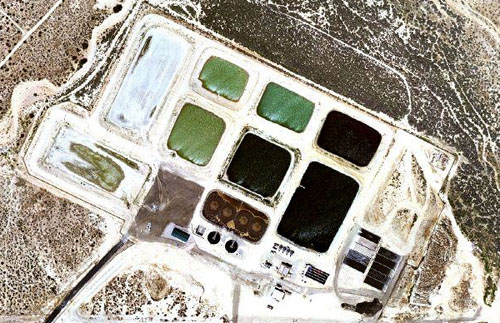
Meanwhile, the incomparable Atlas Obscura has a whole slew of amazing trips planned for March 20, all over the world, all part of their first annual “Obscura Day.” Definitely check out that list for sites closer to you, if you’re not in southern California.
(California City was originally pointed out to me by David Donald, and it was written up by The Vigorous North last year. The “cannabis city” and solar farm links come courtesy of Alexis Madrigal. All images in this post via Google Maps and Google Street View).
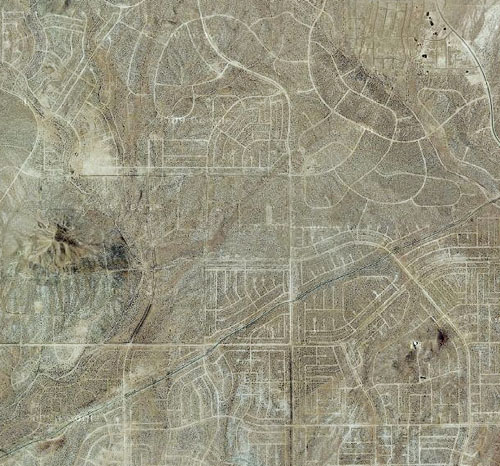
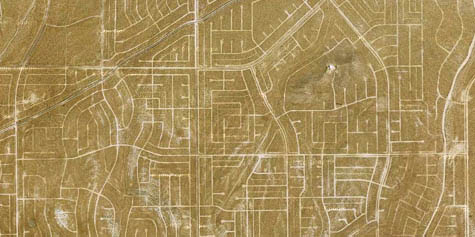 [Image: Geoglyphs of nowhere].
[Image: Geoglyphs of nowhere].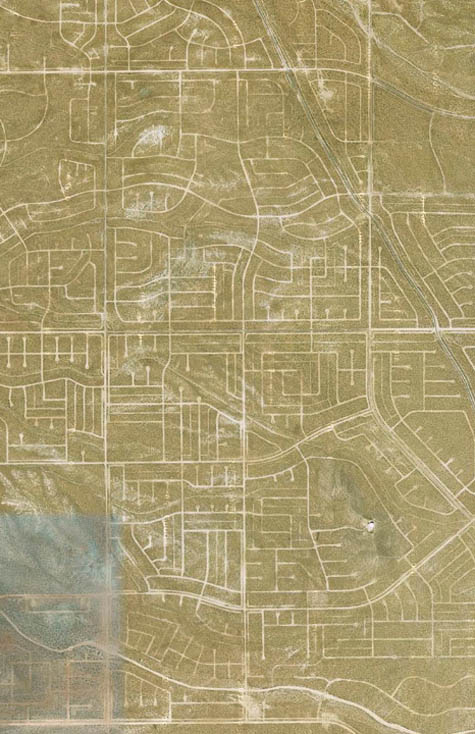 [Image: Empty streets from above, rotated 90º (north is to the right)].
[Image: Empty streets from above, rotated 90º (north is to the right)].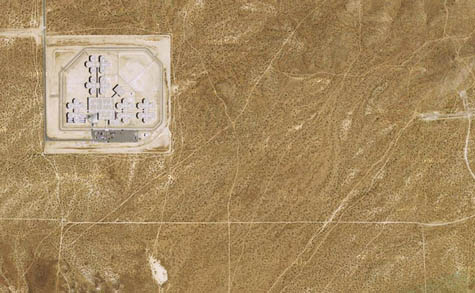 [Image: The geometry of incarceration].
[Image: The geometry of incarceration]. [Image: Spatial fossils of the 20th century].
[Image: Spatial fossils of the 20th century].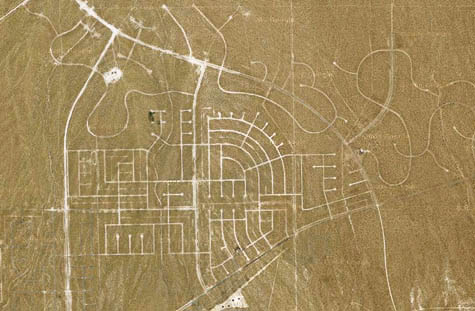
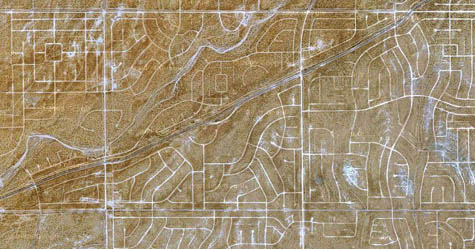
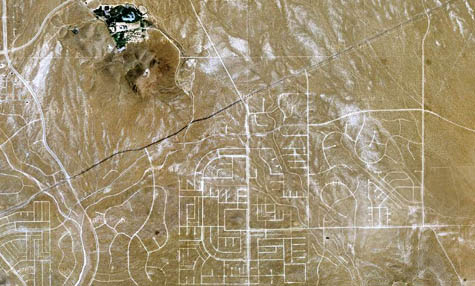 [Images: Zooming in on the derelict grid].
[Images: Zooming in on the derelict grid].